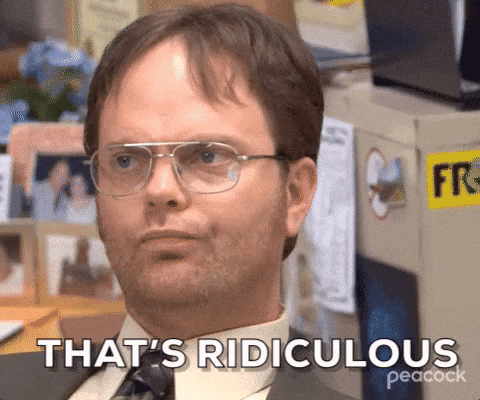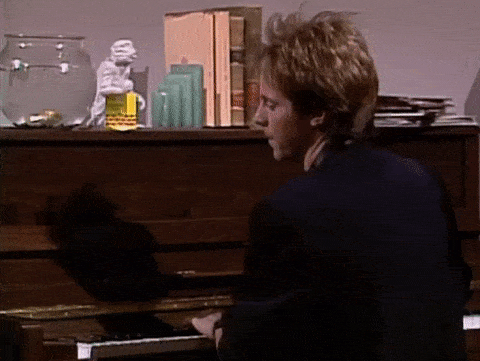- Write Like You Mean It
- Posts
- The headline that changed copywriting forever
The headline that changed copywriting forever
And why.

Hello writer friend,
In 1927, a struggling copywriter called John Caples found himself with a seemingly impossible challenge.
He'd been tasked with crafting a headline for a correspondence course that promised to teach anyone how to play an instrument. (Yes, that’s distance learning. For playing an instrument. Pre-internet. And I thought I was having a bad day.)
I imagine Caples staring at a blank page, like I’ve so often stared at a blank Google doc. I imagine him feeling the weight of his doubts and fears gnawing away at him as he struggled to find the right words.
Again: relatable.
More than a headline
Caples knew his headline had to be more than just catchy—it needed to capture the essence of what his target audience was feeling. If this was going to work, he needed to speak directly to their deepest desires, challenges and fears.
At some point while dwelling on this, he hit upon an idea. What if his ad could tap into something all of us have experienced? What if his ad could capture what it feels like to be underestimated, mocked even, for daring to pursue our dreams and aspirations?

I’ve experienced that feeling. Even if it was just an off-hand comment or a raise of an eyebrow. It doesn’t matter how micro the mocking was, I felt it. It’s likely you’ve felt it too.
With that powerful idea, Caples crafted a headline that would go on to become one of the most famous in advertising history. Here it is:
"They Laughed When I Sat Down at the Piano, But When I Started to Play!"
It doesn’t follow many of the ‘rules’ of headlines we’re used to reading about in marketing today. It’s pretty long, for one thing. It’s not stuffed to the brim with keywords. It doesn’t contain any stats. It doesn’t say: “Do this one thing, bro and make a million bucks!”
Instead, this century-old headline is a masterclass in empathy and emotional storytelling.
Why does this copy work?
The ad copy went on to tell the story of how a man (obviously) being mocked by his friends for his lack of musical talent, sat down at a piano and played beautifully, much to the surprise of said friends. All as a result of taking the correspondence course.
Caples didn't stop there. He paired his headline with an image of the man sitting at a piano, surrounded by a group of people laughing and pointing at him.
The image was the perfect visual representation of the story Caples was trying to tell—a story of triumph over adversity, of the underdog rising up to claim their moment in the spotlight.
That underdog is a hero. That underdog is us!
Read: Stories matter.
Human experiences
The ad was a huge success, with people signing up in their droves, drawn in by the promise of transforming themselves from laughing stock to musical virtuoso.
It worked because it tapped into a universal human experience—the one where we feel underestimated and misunderstood—and promised a pretty appealing solution: the chance to prove everybody wrong.
(Being able to play the piano was just a happy byproduct.)

And the guy who wrote it all? Caples is now considered to be one of the greatest copywriters of his generation. His ad is nearly 100 years old and its principles are used over and over again by copywriters across the world.
What can we learn from this?
Caples' story reminds me of the importance of understanding and empathising with my audience. To think about what I’ve been through and to wonder if some of those things are universal human experiences.
Your idea doesn’t even have to speak to a ‘universal ‘ experience. It just has to be shared by the audience you’re writing for.
By tapping into the unfiltered emotions that drive human behaviour, we can create stories and headlines that don't just get attention, but create a deep, emotional connection with our audience.
(Note: Don’t tip over into playing on people’s fears. You’ll know if you are—you’ll get the ick when you read it back.)
So next time you find yourself facing nothing but a blank screen and a debilitating episode of imposter syndrome, use those emotions.
Whether it's your pain of feeling inadequate or your hope and conviction to make the world a better place, dig into these parts of you.
Then use these parts to write. Others will see an image of themselves in your words.
And then good things might happen.

If you want to grow your audience, a newsletter is the way to go. No Zuckerberg, no Elon, no… whoever owns LinkedIn. You own your relationship with your readers.
I’ve tested a lot of newsletter platforms and beehiiv is the best.
Not only do you have everything you need to grow and build a connection with your audience, you can actually get paid to do so. I made money from week one of sending my newsletter because beehiiv send me ad opportunities every week.
Plus, it’s easy to use and budget-friendly.
Get a 30-day free trial then 20% off your first 3 months when you join via the link below. 👇️
Reply